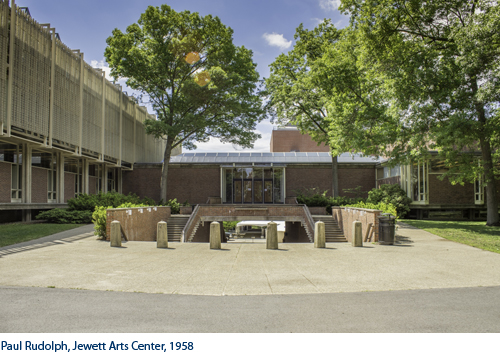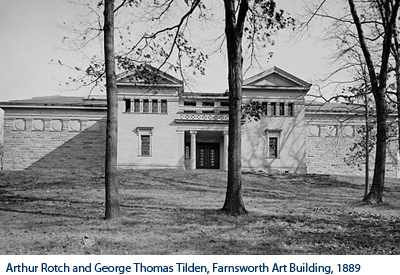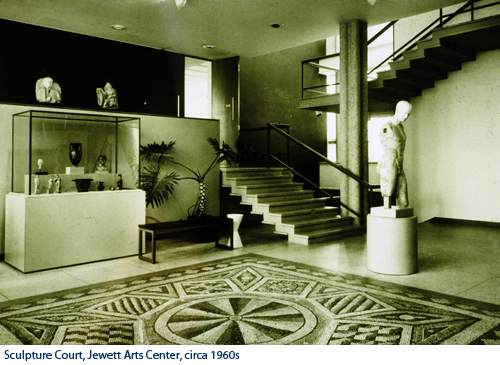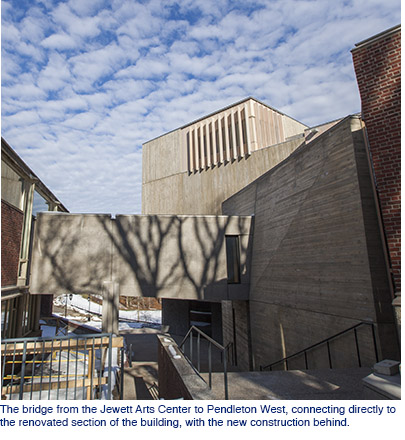
Wellesley’s Art Department includes Art History, Studio Art, and Architecture; we also intersect with programs in Cinema and Media Studies and Media Arts and Science. Our Art History program includes historical, critical, and thematic courses that provide a deep and rich major and the critical tools that every undergraduate needs to navigate in an increasingly complex visual world. The Studio program offers intensive courses in single media - photography, video, print, painting, photography, sculpture, installation, and environmental - as well as the opportunity to engage in intermedial work. Our Architecture program, a partnership with MIT since 1985, combines Studio with historical and critical practices and has long served as a model for other Liberal Arts schools. Cinema and Media Studies and Media Arts and Sciences reach across the campus to offer students multi-disciplinary training while grounding related Studio practices within our larger Department. Faculty and students across our programs work closely with the Davis Museum, as well as other campus resources like Special Collections, Archives, Book Arts, and the Botanical Gardens, to provide hands-on experience as well as internships and leadership opportunities. It is our profound belief that the rigorous study of art and visual culture is critical to a Liberal Arts education and to the power of women to interpret, shape, and master their environments.
America’s First Art History Major
When Henry and Pauline Durant founded Wellesley College in 1870 they did so with the goal of providing young women with the same advantages and education that men had had for so many years. The Durants believed in the aesthetic and moral importance of beautiful surroundings and they spared no expense in providing such surroundings for Wellesley. The “College Beautiful,” as Wellesley was called at that time, incorporated art into its pedagogy and privileged it from the earliest years. Beginning in 1878, when Wellesley’s School of Art was opened, the College offered courses in drawing, painting, and Art History; in 1887 there was enough demand to establish a separate Art History department. Alice van Vechten Brown, an artist and art historian, came to Wellesley in 1897 and introduced what she called the Laboratory Method, which involved teaching art history alongside specific studio techniques such as fresco painting, marble carving, and woodblock printing. This hands-on approach, so vital to an understanding of the relationships between the production, appearance, and function of art, quickly spread to other colleges and universities, where it was known as the Wellesley Method. Our teaching was so successful, and our resources so rich, that in 1900 Wellesley became th e first American college or university to offer an Art History major. At that time, in addition to its own building, the Farnsworth (which was destroyed to make way for the Jewett Arts Center in 1958), the Department had a museum, a library, and five professors, making it the most expensive department to maintain in the whole College; Wellesley was proud of this investment.
e first American college or university to offer an Art History major. At that time, in addition to its own building, the Farnsworth (which was destroyed to make way for the Jewett Arts Center in 1958), the Department had a museum, a library, and five professors, making it the most expensive department to maintain in the whole College; Wellesley was proud of this investment.
Our Early History
We were fortunate to have the Farnsworth; it protected most of our resources from destruction in the devastating College Hall fire of 1914, when so many other departments – as well as the faculty and students who lived in this multi-purpose building that formed the focal point of Wellesley’s campus – lost almost everything. As the College rebuilt itself in the following decades, our Department continued to thrive. The professors in those early years were all female and, as some of the most influential women working in their chosen fields, they provided their students with excellent role models of what a woman could do. They included architect Eliza Newkirk Rogers, medievalist and Monuments Woman Myrtilla Avery, and painter Agnes Abbot, among many others. Alice van Vechten Brown continued to lead the Department, and had been teaching modern art for several years when she hired Alfred H. Barr in 1926. Barr taught what have been described as the first courses in contemporary art in this country; after two years at Wellesley he went on to become the first director of the Museum of Modern Art in New York. His contemporary classes were so innovative, and in such demand, that the entrance quiz he gave students was published in the August 1927 issue of Vanity Fair, enforcing Wellesley’s place in the forefront of art historical studies to a wide population of educated readers. This history served in part as the outline for the highly fictionalized (and often misrepresentative) movie Mona Lisa Smile (2003), but the facts are much more compelling than the film. Wellesley has long been a leader in educating undergraduates in both Art History and Studio; our diverse faculty offer classes that span the global history of art and the widest possible range of media.
Beyond the Classroom
Our students come from across the campus, to fulfill their arts requirement, to explore a personal interest, and of course to major and minor. But we firmly believe that their education continues outside of the classroom and we work hard to tailor their experience to their interests as well as to pedagogical innovations in our fields. Many of our students travel abroad for a semester, a year, or a summer; they earn challenging internships, sponsored by Wellesley and by outside agencies, in Boston and beyond; and they attend lectures, exhibitions, symposia, club meetings, and other activities that engage them on every level. Annual events, like our Bakwin and Halverson lectures, as well as changing exhibitions by visiting artists and our own students in the Jewett Gallery (which many of you will remember as the campus museum, before the Davis was built), as well as a recently insitituted weekly coffee hour, bring all of us together regularly. Our alumnae are employed across the country and the world, working in colleges, museums, foundations, and a wide range of other institutions. A 2011 survey of members of the College Art Association, the main professional organization for art historians and artists in academia, and the American Association of Museum Curators cites Wellesley as the top school attended by all respondents, and the sixth by museum professional respondents. These alumnae provide a powerful support network for our current and recently graduated students, and we bring them to campus when we can; for example, this year marks the second in a lecture series that arranges for an Art History alumna to speak to our student-run Art History Club. Our graduates use their Wellesley training to achieve success whatever their chosen field; a solid liberal arts education takes them far. We are proud of all of them, and hope their time working with art at Wellesley enriched their lives and the lives of those around them in the best possible way.

Looking Ahead
We continue to provide students with an excellent education. In Spring 2017, after a year and a half in swing spaces, most of our Studio courses moved back into the newly renovated and updated Pendleton West, designed by KieranTimberlake to accommodate Studio needs for the foreseeable future. Art History and some Studio classes, as well as most of our extra-curricular activities, continue to take place in Jewett, our historically significant Brutalist building by the architect Paul Rudolph in 1958. These renovations, and the ongoing improvements to Jewett, support our many activities, and allow us to pursue a vibrant calendar of events to engage our students, alumnae, and the local community.
Email us
We hope to collect information from past and present students for an annual newsletter. Please use the link above to send us news of your accomplishments – personal or professional – so we can celebrate with you. We update our Facebook page and Instagram page to keep you apprised of our activities in and out of the classroom, so be sure to check them often and plan to attend our alumnae reception at reunion each June. We look forward to welcoming you to campus, and to the Art Department, either virtually or in person, in the near future.
David Teng Olsen
Art Department Chair and Studio Program Director
Jacki Musacchio '89
Art History Program Director

